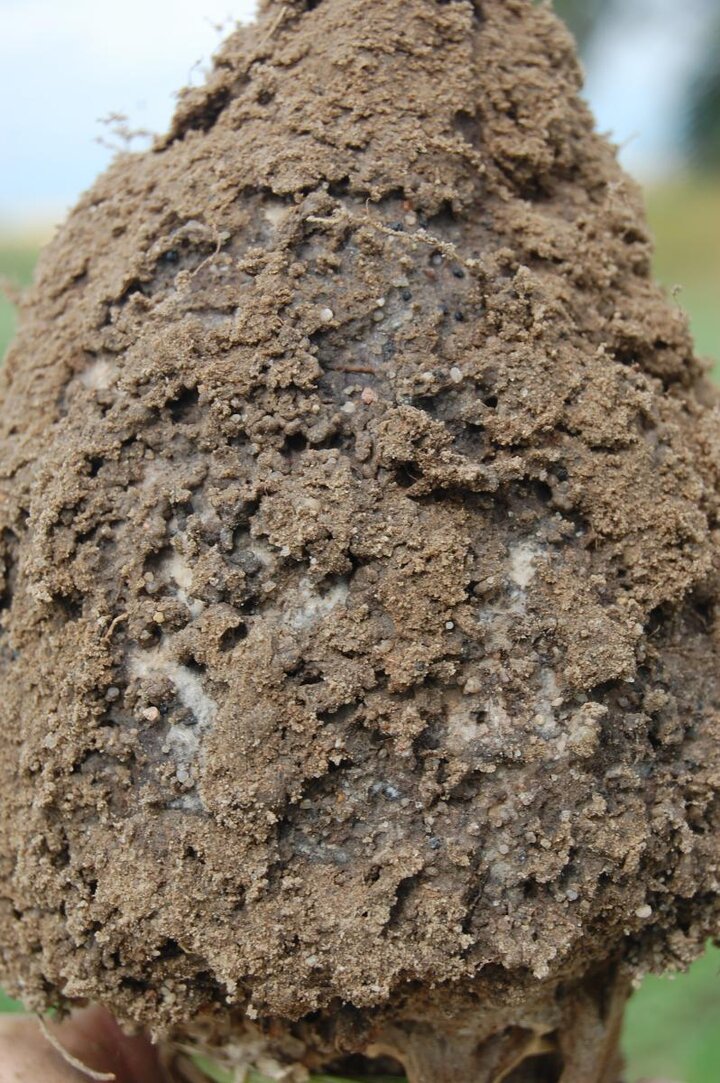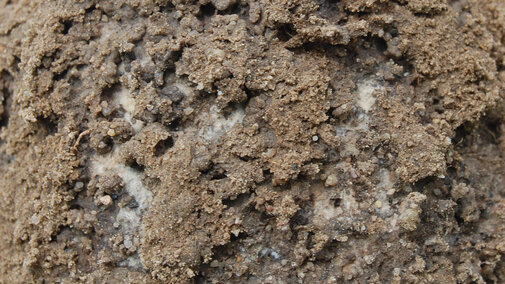This is the second article in a series on distinct sugar beet root rot diseases caused by the genus Rhizoctonia. The first article was Exploring the Rhizoctonia Pathogens of Sugarbeet.

The genus Rhizoctonia is comprised of a group of highly variable, soilborne, sterile fungi that are highly important as economically damaging root pathogens on many crops. In fact, the ability for this fungus to aggressively attack a wide range of host roots is responsible for its generic name, Rhizoctonia, translating into English from the Greek as “killer of roots.”
Rhizoctonia solani
Rhizoctonia solani is the most well-known member of this group and is widely distributed throughout most, if not all, of the world’s arable landmass. This species causes a myriad of diseases, including seed decay, post- and pre-emergent damping-off, stem cankers, root and crown rots, fruit decay, and in some instances, foliar diseases. You may be surprised to learn that R. solani was not the first Rhizoctonia pathogen discovered. A lesser known species of Rhizoctonia had been noticed causing a disease of the crocus plant called violet root rot in the early 1700s.
Rhizoctonia crocorum
In 1728, Henri-Louis Duhamel du Monceau described the first known Rhizoctonia disease on Crocus sativa, in southern France. This peculiar plant is a member of the iris family, and the source of the spice saffron. Diseased bulbs were covered with a thick reddish-violet hyphal mat (Figure 1). Du Monceau noted that the fungus moved spatially through the soil, infecting and spreading disease from bulb to bulb underground. The genus Rhizoctonia was formally created in 1815 by the French mycologist Augustin Pyramus de Candolle to accommodate the crocus pathogen, naming it R. crocorum.
Violet Root Rot in Europe
In the 1850s the disease became well known throughout Europe by various names like violet root rot, red root rot, or violet root felt disease, afflicting at least 47 genera of plants in 21 families (mostly dicots). It was particularly problematic in Germany when Julius Kuhn published an account of serious root rots on alfalfa, carrots, and mangolds (early sugar beets) accompanied by a purple mold on subterranean plant parts. Wilting symptoms occurred in localized but often large clusters, resulting in rapid death of plants. This condition was referred to as “Fehlstellen,” translated into English as “dropouts” or “defects.”
Violet Root Rot in the U.S.
In the U.S., just as in Europe, the first Rhizoctonia disease discovered was violet root rot in Nebraska on alfalfa. Reports were made independently in 1890 from two sites by two different individuals (Roscoe Pound and W. J. Webber). Both additionally remarked that the disease was rare, of little consequence, and “seemed to be harmless.”
Conversely G. F. Freeman reported in 1908 that the red root disease of alfalfa was spreading rapidly in the state, potentially threatening the industry in Kansas, and every effort should be made to find a practical means of control. In 1915 it was first reported on potatoes in Oregon, and was additionally found infecting potatoes throughout western Nebraska between 1916 and 1920, where it was described as “very prevalent.”
Violet Root Rot Today
Since that time, the disease has been identified sporadically in the U.S. on potatoes, carrots, sugar beets, alfalfa, and celery, but is still considered relatively rare. Because of its uncommon occurrences, the pathogen is poorly understood, making its potential for causing economic damage possible, but uncertain in the U.S, while continuing to remain problematic in Europe.
Next month's article will look at another Rhizoctonia root disease.
References
Duggar, B. M. 1915. Rhizoctonia crocorum (Pers.) DC and R. solani Kuhn (Corticum vagum B. and C.) with notes on other species. Annals of the Missouri Botanical Gardens 2: 403-458.
Harveson, R. M. 2015. The bacterium of many colors. APS (American Phytopathological Society) Press, St Paul, Minn., 288 pp.
Peltier, G. L. 1916. Parasitic Rhizoctonias in America. Illinois Agricultural Experiment Station Bulletin 189: 283-390.
Zadoks, J. C. 1981. Mr. Duhamel's 1728 treatise on the violet root rot of saffron crocus: “Physical explanation of a disease that perishes several plants in the Gastinois [France], and saffron in particular.” Mededelingen van de Landbouwhogeschool, Wageningen 81-7: 1-31.

